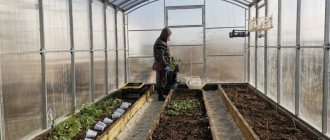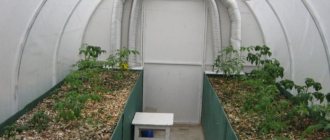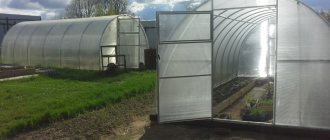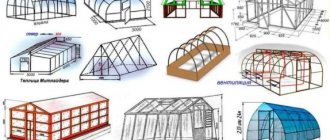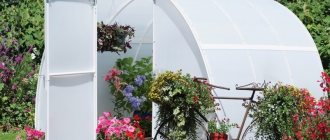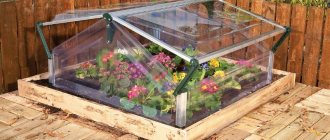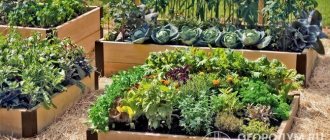Support for tomatoes is necessary; it provides access to sunlight and air to the bushes and fruits. Tomato supports minimize the contact of the plant with the soil, which contains pathogens. Thanks to a trellis for tall tomatoes, you will be able to get a full harvest from healthy bushes. The device will help avoid infection with late blight and blackleg, preventing putrefactive processes from developing. Tying tomatoes allows for better access to the bushes when caring for and harvesting.
Definition of trellis, what is it
Bushes fixed on special supports and carefully tied up in practice give a larger harvest; a trellis is a supporting structure that can withstand sufficient loads and is not difficult to make yourself.
The trellis is installed on vegetable beds and can be of different configurations; in addition to a stable frame, its design includes longitudinal and transverse guides necessary for tying up plants of different heights or for a certain period of growing season and development.
Disadvantages of the trellis method of growing tomatoes
There are some drawbacks here too:
- You will have to inspect and correct the tomatoes on the trellis almost every day. If you don’t keep track, the bush will fall down, the stem will bend “in the wrong direction,” and the brush will hide from the sun.
- To correctly place a bush on a trellis, experience is required. Beginners do not always succeed in “spreading out the bush” evenly the first time, but annoying accidental “breaking off” of a bunch of unripe tomatoes or a stem often occurs.
- The design of the trellis, although simple at first glance, must be assembled thoroughly and thoughtfully, with a certain margin of safety. Otherwise, it could easily collapse and leave you without a harvest.
- The trellis needs to be treated every year; tomato diseases and pests “overwinter” well on it.
The most reliable way to treat a trellis against pests and diseases is extremely simple: in the spring, the trellis must be painted with oil paint.
The trellis method of gartering tomatoes involves collective support of plants. © eda-land
Purpose and necessity of the design
A practical and stable support for tomatoes helps to simplify the procedures for caring for tomato bushes; tied bushes are easy to weed and remove weeds, water and feed in a timely manner.
Reliable structures are stationary and portable, so they can be constantly used in farming to effectively increase the yield of various and popular garden crops.
When to tie up tomatoes
The first garter for tall varieties is done 3-5 days after planting the seedlings. In the future, this event is carried out regularly as the bushes grow. Although some gardeners recommend that the first tying be carried out only after the seedlings have taken root well and form 2-3 new leaves in a permanent place of growth.
What to do before gartering
Before starting to garter the bushes, the tomatoes are pinched. This event increases crop productivity. If you do not remove the side shoots that form in the axils of the leaves, then you may not wait for fruiting, since the plant will begin to form only stems with flowers.
Reference. Stepchildren are carried out once every 10-12 days, not allowing the stepsons to grow more than 5 cm.
Decide in advance on the method of tying the bushes, prepare all the materials necessary for this. If fabric, elastic bands or other garter devices are used for a second season, they must first be washed and disinfected.
The advantage of using trellises
For the formation of the ovary and the full ripening of the crop, the plant needs a sufficient amount of oxygen, which it receives more when tied up, while eliminating the slightest chance of the leaves coming into contact with the ground.
An additional and important advantage of tying shrubs to trellises is the practical opportunity to reduce the load on the main stem during a bountiful harvest.
What tomatoes can be grown without a garter?
Without a garter, you can grow low-growing and early-ripening varieties . It is often said that determinate varieties . These tomatoes stop growing after setting 4-5 bunches. From the general group of determinate tomatoes, superdeterminate , which ripen very early and do not require pinching at all. In “simply” determinate plants, you need to remove excess shoots, otherwise you can end up with a plant overloaded with fruits that will develop poorly.
But still, the best choice for those who want to simply plant a plant and enjoy the harvest are standard tomatoes . This is one of the varieties of determinate tomatoes, which are distinguished by a short and dense stem and small stature.
After our advice, gartering tomatoes doesn’t seem like such a scary task to you anymore, does it? Do not neglect this important agricultural technique, and your tomatoes will always look healthy and bear fruit abundantly.
Materials for making trellises
Do-it-yourself trellis supports for tomatoes can be made from a variety of materials, and you can use wood and metal, canvas fabric and wire; to reduce the cost of construction, it is recommended to use used building materials.
To the traditional materials used for the manufacture of trellises, metal-plastic pipes have recently been added, which are easy to process and retain their shape for a long time, which is successfully combined with strength and reliability.
Advantages of the trellis method
Is it possible to grow tomatoes in Siberia? And not just grow, but grow tomatoes that will surprise everyone? Can! You just need to put in the work and know agricultural technology. Siberia is also different; in Minusinsk, for example, there are annual competitions for gardeners to grow the largest tomato. The tomatoes grow more than a kilogram or even two, and the winner gets a car. And there are cities like Norilsk: no forest, no heat, and even permafrost. Therefore, we will consider options for growing tomatoes on permafrost and without it. Read more…
First of all, to make trellises from wood, you should choose durable material - oak, ash, chestnut, mulberry, and try not to use birch, poplar and maple. Wet wood is also not suitable for creating such elements.
Having installed our curved elements of the trellis (base), in the required place, parallel and strictly according to plan, we make horizontal jumpers, so to speak, stiffening ribs, which will increase stability and become special “rose holders”. You can see what we got in the photos below.
- Trellises can be divided not only by type of production materials, but also by direction and purpose
- Trellises can be made independently or purchased, but the materials for their production remain almost identical. For the most part, “home” trellises for the dacha are made from wood, wood and wire, while purchased ones are most often made from steel rods and plastic.
- The design of the trellis made of wooden slats is interesting. It is not only functional, but also very decorative.
Three columns are buried so that their height above the ground is three meters, and four meters apart from each other, in one row. The posts must be buried well so that they do not wobble. We connect the top of three posts with two four-meter slats. We nail it firmly on top.
Types of tomato trellises
According to the generally accepted classification by design, supports are divided into trellises for open and closed ground. When choosing which type of supports is best to make, it is necessary to focus on a set of their operational characteristics.
It is important that the trellis ensures free movement between the beds, provides excellent ventilation of the tomato bushes and facilitates the harvesting procedure, without damaging the ripened fruits, which is important for their subsequent storage and processing.
Horizontal trellis for cucumbers: photo examples of design
This is the easiest option and is great for beginner gardeners. For such a garter you will need two metal pipes or wooden columns. They should be placed along the edges of the bed. Between them you need to stretch strong twine, twine, wire or rope. The optimal distance between stretched rows should not exceed 25-30 cm.
Next, you should carefully pull out the sprouts of the young cucumber towards the lower support and secure them to it. This support can be improved with vertical ropes, then it will be more comfortable for the plant to grow upward.
On a note! The horizontal garter of cucumbers has one single drawback: after reaching the top bar, the stems of the plant will fall down and shade the bush itself. But this can be avoided by making the support high enough or cutting off too long stems.
Cucumbers on a trellis are better ventilated and less susceptible to mold and fungal diseases.
Trellis for open ground
Convenient and practical supports for tomatoes, used in open ground, consist of a simple structure of poles stuck into the soil, located at an angle, and securely fastened in the middle.
It is necessary to place a horizontal guide in the hollow created by intersecting poles and fix it; it will definitely be useful for tying up young seedlings or low-growing tomato bushes, which are recommended to be planted on both sides of the trellis to save space. Ready-made versions of simple and complex trellises can be viewed here.
TOMATOES! Design for tall tomatoes!
Reviews:
petrikbig
writes: Tomato garter! Homemade design!
Nicu Lungu
writes: Isn’t the planting thickened?
Ludmila Zhmykhova
writes: How much work the Russian people do and why do we let the Chinese into our lands. Thank you
Rashid Maksyutov
writes: Very neat and beautiful, like it.
Igor Tyo
writes: Well done for the ages
Often, gardeners do not spend much on a trellis and prefer to build it from PVC mesh or twine. Why are two pillars 1.5-1.8 m high driven into the sides of the bed, the third is strengthened horizontally from above, in order to later wrap twine around it or secure the mesh. Otherwise, when the fruits become heavy and filling, it may tear, slide down and damage the bush. Pegs are driven in on both sides of the planned bed. The thread is pulled in a zigzag pattern between the vertical posts, then wrapped around the cross one and secured to a peg.
A wooden trellis can be made from flexible branches or, more durable, from planed slats. In appearance it resembles a wall bars or a school horizontal bar. The slats are used to make cells 15-20 cm wide. The width of the planks should be more than 3-4 cm, horizontal posts - more than 5-7 cm, vertical crossbars - 4-6 cm. The planks are knocked into a rhombus or square using nails or self-tapping screws and attached to a base of bars. This version of the trellis has a very decorative appearance and decorates any area.
Trellis for closed ground
In greenhouses and greenhouses, it is recommended to use low, but most reliable supports to preserve plants and crops, which is facilitated by the mandatory staking of plants; such a structure can be built independently.
Metal-plastic pipes are used as supports, inserted vertically into the soil and filled with sand for stability; using special fasteners, horizontal guides made of elastic and soft cord are fixed on them (at different heights) for tying up plants.
Materials and accessories
When tying up tomatoes, it is important not only to follow the process technology, but also to choose the right materials with which to support the bushes in the air.
Tips for choosing garter material:
- It is prohibited to use wire, thin twine or fishing line as garter material. All this digs into the stems of the bushes, damaging and deforming them. You need materials 4-5 cm wide.
- It is forbidden to use last year's garter. It can retain pathogens of various diseases, which there is no need to transmit to new plants.
- Natural fabrics cannot be used. They tend to rot and harbor insects, fungi, and bacteria.
- The best option is a synthetic material with a low stiffness coefficient: nylon cord;
- leg-split;
- wide and thick rope;
- old nylon stockings.
Before use, the garter material must be disinfected - washed and boiled.
Along with garter materials, you will need support devices to which the bushes are tied to plastic and metal structures. It can be:
- stakes;
- grids;
- frames.
Methods for gartering tomatoes on a trellis
When using supports for tomatoes in open ground, it is important to prepare the material for garter in advance; it must be strong and soft; gartering is carried out in two ways, which differ in the technique of carrying out the procedure.
- Characteristics of tomato varieties
- The most delicious varieties of tomatoes
- Caring for tomatoes during flowering - proper planting, feeding and fertilizing tomatoes (105 photos)
Experienced gardeners recommend fixing the shoots on horizontal guides as they develop, or you can lower the garter material from the top guide and secure the branches on it, constantly adjusting the length of the soft ropes.
Gartering tomatoes is a mandatory agrotechnical measure necessary to increase productivity; the use of a trellis can significantly simplify the care of tomatoes planted in open ground.
Why do you need to tie up tomatoes?
Experienced gardeners who have been growing tomatoes for many years know that gartering is an important event on which the quantity and quality of the harvest directly depends. The garter is especially important for medium-growing and tall varieties - their bushes grow several kilograms of fruit, under the weight of which the bushes break and die.
Why do you need to tie up tomatoes?
- unloading of the stem and branches - part of the weight of the fruit is transferred to the supports;
- protection of fruits from slugs;
- protection against diseases that are transmitted to plants through close contact with the ground;
- preventing fruit spoilage due to fungal attack;
- More sun penetrates to the fruits, they ripen faster;
- convenient to collect ripening fruits.
Special recommendations for tying tomatoes in a polycarbonate greenhouse
What is the best way to tie tomatoes in a polycarbonate greenhouse?
Despite the fact that the trellis fastening method is considered the most labor-intensive and complex, it is recommended to use it in polycarbonate greenhouses. Polycarbonate is characterized by good light transmission and quickly accumulates heat.
The maximum amount of light is provided to the plants and “heat stroke” is prevented by allowing the branches to be arranged evenly and spaciously on the trellis.
Garter bushes
I tie up tomatoes when the grown stem begins to lean to the side. At this point, the tomatoes should be rooted in accordance with the shape of the bush. For the garter I use synthetic twine with UV protection. It comes in different diameters, but it is advisable to choose one that is not too thin so that it cuts the stem. The diameter of my twine is 1.4 mm, so for reliability I will tie the tomatoes with twine.
To measure the desired length for the guide, I step on the end of the twine at the base of the tomato with my foot and pull the twine to the top rail, then measure an additional 35-40 cm for the slip knot.
Having cut a double length, I fold the twine in half and secure the lower end to the stem with a slip knot, but not near the ground, but under the lower leaves. Thanks to the sliding knot, the tomato trunk is not pinched and, if you suddenly need to untie the guide, just pull the ends of the twine.
I throw the top end of the twine over the top rail and secure it with a slip knot so that I can adjust the tension of the twine at any time. To secure the bush, I make several turns of twine around the stem in a clockwise direction.


